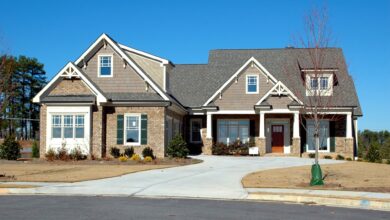Understand the Key Components of Fire Control Protection Systems
Introduction:
nnnnIn this present reality where fire can represent a huge danger to lives and property, the significance of dependable fire control protection systems couldn’t possibly be more significant. From private structures to industrial buildings, these systems assume a vital part in identifying, containing, and dousing fires. In this far insightful article, we will dig into the world of fire control protection systems, investigating their different types, parts, and the basic job they carry out in fire safety.
nnnnWhat are Fire Control Protection Systems?
nnnnFire control insurance frameworks are an organization of incorporated gadgets and gear intended to distinguish, make due, and battle fires successfully. They are essential for guaranteeing early fire recognition and forestalling devastating harm.
nnnnKinds of Fire Control Protection Systems
nnnn1. Automatic Sprinkler Systems
nnnnProgrammed sprinkler systems are one of the most widely recognized and viable fire control measures. These systems actuate when they identify heat, delivering water or other fire-smothering agents to stifle the fire.
nnnn2. Alarm Systems
nnnnAlarm systems are intended to give early advance notice of the possibility of a fire outbreak. They incorporate smoke alarms, heat indicators, and discernible cautions to caution inhabitants and responders.
nnnn3. Fire Extinguishers
nnnnVersatile fire extinguishers are significant for guaranteed reaction to little fires. They come in different kinds, including water, foam, CO2, and dry chemical extinguishers.
nnnn4. Fire Hydrants
nnnnFire hydrants are decisively positioned all through metropolitan cities to provide a ready and easily accessible water source to firemen during fire crises.
nnnnComponents of Fire Control Protection Systems
nnnn1. Detectors and Sensors
nnnnDetectors and sensors are the first line of defense for firefighting officers in fire control. They come in various structures, like smoke detector alarms, heat detector alarms, and fire detectors, each designed to recognize unique fire indicators and to be able to carry out its particular design purpose in the firefighting process.
nnnn2. Control Boards/Panels
nnnnControl boards act as the headquarters unit of fire protection systems. They get signals from fire indicators, set-off alarms, and activate fire suppression systems.
nnnn3. Suppression Equipment
nnnnSuppression equipment incorporates sprinklers, fire extinguishers, and foam systems, which are fundamental for stifling fires or monitoring them.
nnnnThe Essential Job of Fire Control Protection Systems
nnnnFire control protection systems are not simply an issue of consistence; they are lifelines. Here’s the reason they are imperative:
nnnnQuick Reaction
nnnnThese systems answer quickly, limiting the time between fire discovery and activity.
nnnnLimited Property Harm
nnnnBy containing fires early, these systems lessen property damage and monetary misfortunes.
nnnnSafety of Lives
nnnnIt guarantees the safety of tenants by giving early warnings and powerful firefighting devices.
nnnnReduced Insurance Expenses
nnnnLand owners who put resources into strong fire control protection systems frequently appreciate decreased insurance premium payments.
nnnnFire Control Assurance in Various Settings
nnnnResidential Buildings
nnnnIn private settings, fire control assurance frameworks commonly incorporate smoke alarms, fire dousers, and departure plans. These actions are crucial for defending families and their homes.
nnnnCommercial Buildings
nnnnBusiness spaces require greater frameworks, including sprinklers, alarms, and fire entryways. These frameworks safeguard the tenants as well as significant resources and information.
nnnnIndustrial Buildings
nnnnModern settings frequently face special fire dangers because of the presence of combustible materials. In such cases, high level fire control frameworks with specific concealment specialists are vital.
nnnnFAQs
nnnn– Are fire control protection systems required?
nnnnIndeed, many building regulations and guidelines command the installation of fire control security systems to guarantee safety of lives and property.
nnnn– How Frequently Should You Check Fire Control Protection Systems be examined?
nnnnOrdinary assessments, regularly every year, are vital to guarantee the systems are good to go.
nnnn– What is the cost of introducing a Fire Control Protection System?
nnnnCosts shift broadly founded on the sort and size of the framework required. It’s ideal to talk with an expert for exact evaluations.
nnnn– Will Fire Control Systems be Coordinated with other Protection Systems?
nnnnIndeed, current fire control frameworks can be incorporated with other security frameworks for extensive assurance.
nnnn– How should I respond on the off chance that my alarm goes off unexpectedly?
nnnnTreat each caution as a possible crisis. Empty the structure and call crisis benefits right away.
nnnnA Final Word:
nnnnIn this age where fire outbreaks can begin in a moment; fire control protection systems are the often overlooked but yet truly great necessities that stand between catastrophe and safety. From automatic sprinklers to alarms, these systems are the gatekeepers of safety of lives and property. Putting resources into these systems isn’t simply a legal requirement; it’s also an ethical obligation to safeguard what makes the biggest difference.
n


